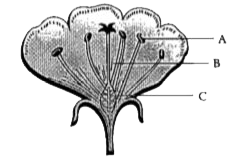Implantation takes place after____of fertilisation.
5 days
6 days
7 days
8 days
The correct Answer is:C
Step-by-Step Solution:
1. Understanding Fertilization: Fertilization occurs when a haploid sperm cell fuses with a haploid ovum (egg cell), resulting in the formation of a diploid zygote. This is the first step in the process of human reproduction.
2. Formation of the Zygote: After fertilization, the zygote (which has a ploidy of 2n) begins to undergo cell division and development. This process is known as cleavage.
3. Development of the Blastocyst: As the zygote continues to divide, it eventually forms a structure known as the blastocyst. This is a hollow ball of cells that will later implant into the uterine wall.
4. Timing of Implantation: Implantation is the process where the blastocyst embeds itself into the endometrial lining of the uterus. This typically occurs approximately 7 days after fertilization.
5. Conclusion: Based on the above information, we can conclude that implantation takes place after 7 days of fertilization. Therefore, the correct answer is option 3: 7 days.
---
Similar Questions
Knowledge Check
Which one of the following events takes place after double fertilisation ?
AThe pollen grain germinates on the stigmaBThe pollen tubes enter the embryo sacCTwo male gametes are dischared into the embryo sac.DThe PEN (Primary Endosperm Nucleus) develops into endosperm.Fertilisation takes place in the
AfollicleBoviductCuterusDvestibule
Fertilization is a physicochemical process. Explain various changes that take place after fertilization
View SolutionHow does fertilisation take place in human beings ? Fertilisation occurs once in a month. Comment.
View SolutionWhat is fertilization? How does implantation occur after fertilization in human being?
View SolutionWhat will be the fate of antipodal cells after fertilisation ?
View SolutionWhat is implantation? Where does it take place? How many days after fertilization does it take place in humans? Explain briefly how it occurs.
View SolutionIn angiosperms, normally after fertilisation
View Solution

